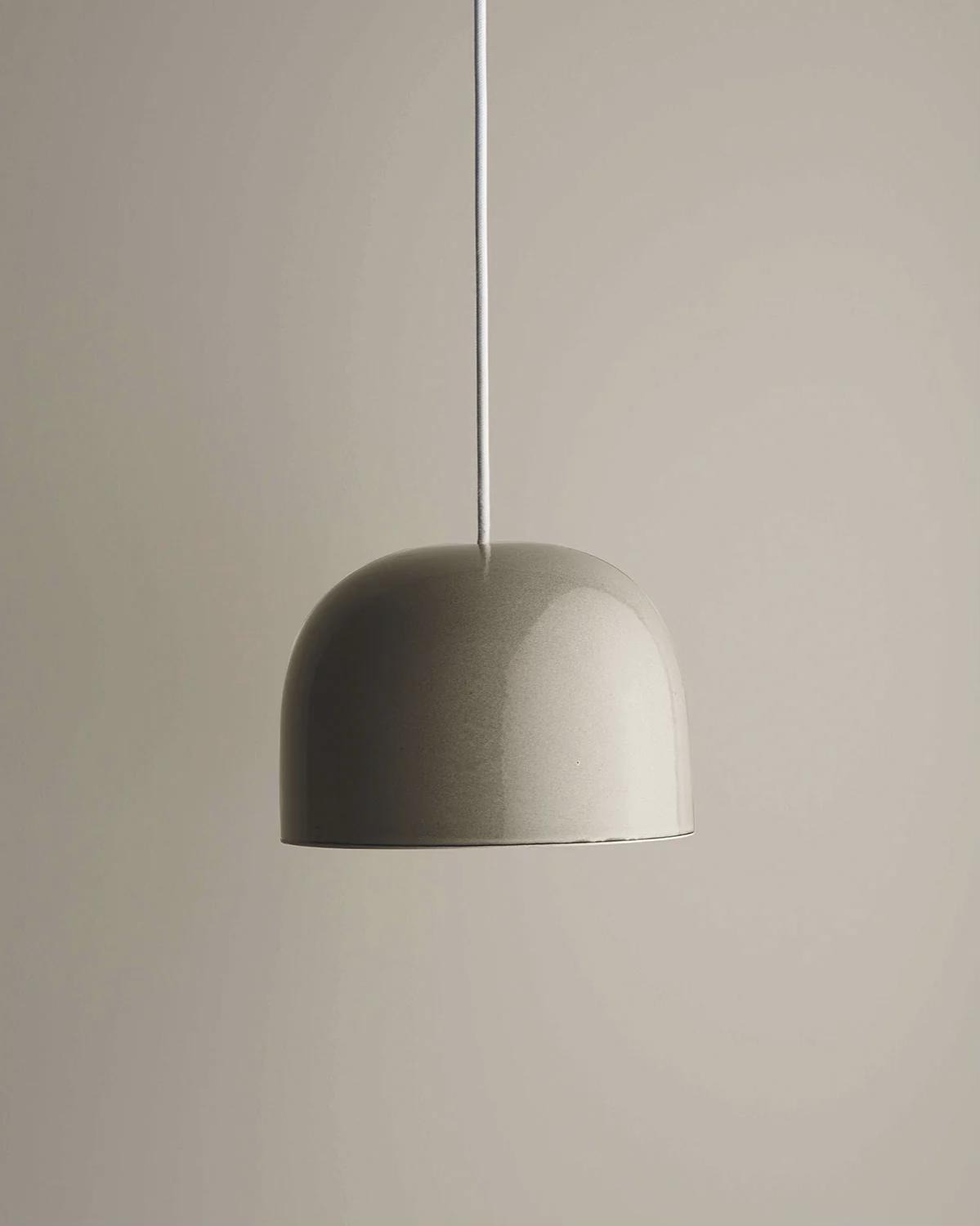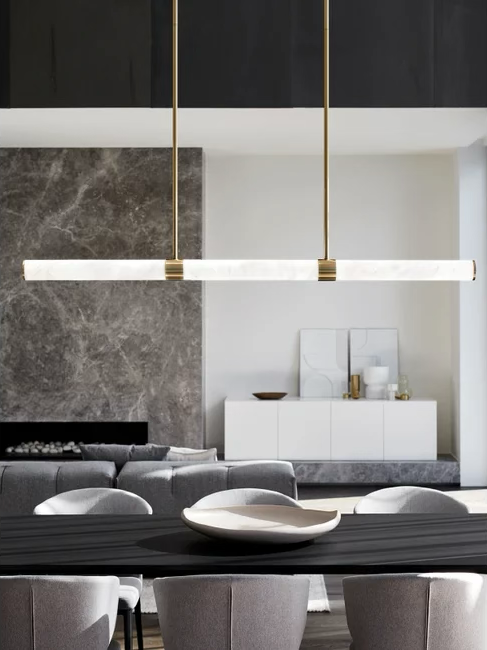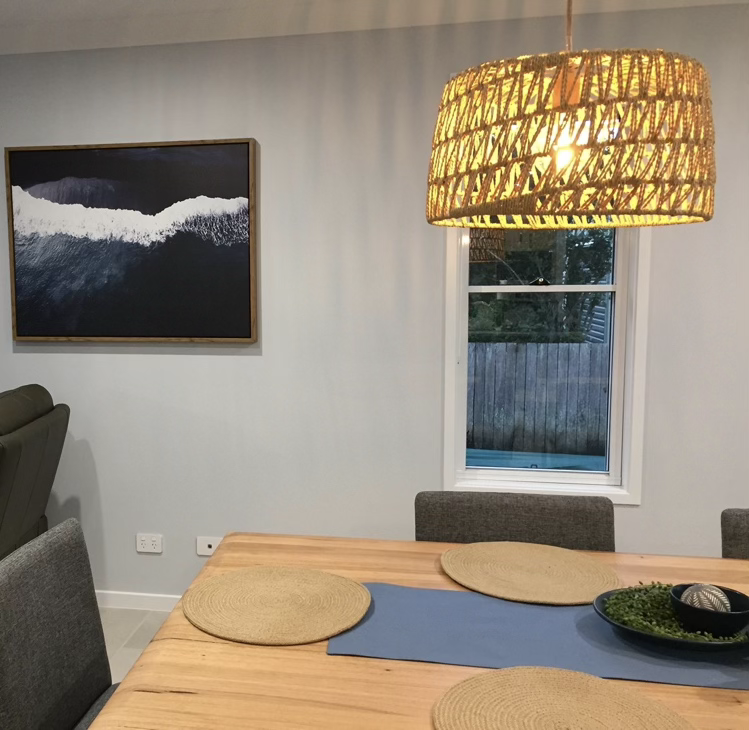Lighting is a very important part of designing your kitchen. Known as a task room, meaning it’s a space that needs to be designed for productivity.
When it comes to kitchen lighting, the most common issue I see is no lighting over or in front of the island bench. By having lighting only on the ceiling behind you, when you are working at the island your body creates a shadow over it making it difficult to see what you are doing.
Pendant lights over the island bench are a popular addition to kitchens because they offer softness to a room that has many hard edges and surfaces, but which style pendants to choose and what finish are you looking for?
The material finish of your pendants can change the whole aesthetic of your kitchen, but will also affect how much light they give and how easy they are to maintain.
I'm a very practical person, I don’t want to spend my time cleaning to keep my home looking great. So with that in mind and the fact that surfaces in the kitchen often receive splashes and bangs, I believe it’s super important to think about the practicality of your lighting materials as well as their beauty.
If you want to know my take on the most practical pendants for the kitchen, here's my pros and cons of various materials:
Ceramic and stone – are my favourite finish for kitchen pendants as they are durable, usually easy to clean and create a beautiful warm aesthetic that can suit a variety of styles.
Did you know Robert Gordon creates stunning ceramic pendants as well as beautiful kitchenware? Such as these beautiful Bell pendants, which have just been installed in one of my client’s homes (images will be on Instagram shortly)

Rattan or any type of weave or fabric – instantly softens and gives a homey feel to a kitchen, but it is a bugger to clean when you have airborne oil and dust collecting on it. If there is distance from your cooking space, I would consider it, but if the stove is close by, perhaps you could use it over the dining table instead?
Metals of any kind – this is very popular in kitchens for the simplicity of wiping it clean. You can usually spray a cleaning agent on to degrease them as well. Depending on the style and texture, it can give a harder more industrial look to the kitchen and perhaps be a little less exciting.
Concrete – also a good choice for kitchens as it can be reasonably easy to care for. Again, it can appear a bit industrial depending on the design.
Glass – usually adds a soft delicateness to a kitchen, and while it can be wiped over easily, if it is a clear smooth finish, it will easily show dust, grime and streaks. If the pendants are delicate glass, they may be a little more tricky to clean also.
Wood – is a great choice as it adds a natural warm feel to a kitchen but is also easy to wipe over. Having a pattern it also hides a lot of dust and grime. You do need to ensure it is sealed (usually only an issue if custom or home-made) as timber can absorb the moisture from cooking.
How many pendants should you have?
Well, design aesthetics say odd numbers are visually best, so 3 pendants is a popular choice.
In saying that, there are a number of factors that need to be considered, the main two being - how long is your bench and how big are the pendants you want to use?
I will start by saying below are just meant to be a guide and whatever you prefer is totally fine, it’s your home so it needs to work for you.
My guide is generally, if you have a 1-1.8m long bench, then two pendants is usually sufficient. If you have a 2-3m bench then three average size pendants works well.
This is only to be taken as a guide as it does depend on so many factors and rules can be broken.
For instance, my kitchen island is 2.8m but I only have two pendants. Why? Because they are fairly large and a heavier colour (black) with intricate detailing and I have a high black mixer tap in between. The height space between a pendant and the tap would not look sufficient, so in my eyes, the visual ‘three’ is created by the two pendants and the one black mixer. I also have plenty of light to work with so this was not an issue to deal with.
OK, lets talk spacing.
Generally, the pendants should be approximately 75-90cm from the top of the island. This will also depend on the ceiling height. If you have very tall ceilings, you may need to go higher and larger in pendant size to accommodate this and give a feeling of balance to the room.
The distance between pendants should be around 75-80cm apart and I like to leave around 30cm from the end of the bench to the first and last pendant to give a visual balance.
For the general kitchen lighting, if possible, it’s a great option to have multiple downlights spread evenly around your kitchen, spaced approximately 1.3 to 2 metres apart should be sufficient for good lighting throughout. If you have a smaller kitchen, these can be closer and if you have a larger kitchen these would generally be further apart.
If you want something different what lighting options are there?
You can use a pendant that has a bar or tube light hanging from two cables, depending on the style and finish these may give a harder, more angular aesthetic though. Note: there are also pendants which hang from a plate on the ceiling which usually only uses one electrical point but can have numerous pendants hanging from it. This is commonly known as a ‘bar’ light.
You could also go for a cluster of lights. This is great for a small kitchen where you want it to feel more open over the bench and main part of the kitchen, to draw your eyes to the end of the bend or to give a more asymmetrical, funky feel to your kitchen. A cluster of lights can also be purchased on a plate with one electrical connection or individually with numerous points, wired together to one light switch. You can use a cluster of the same lights or different types and shapes. Usually you would hang them at different heights and keep to odd numbers.
How much light will be emitted and where it is directed, will depend a lot on the style of your pendants.
Getting the correct glove to suit your pendants and the best wattage for your requirements is important but also the shape of the pendant and finish. Glass pendants provide clear light diffusion, meaning they will spread and scatter light through them in all directions, while a solid pendant such as metal, timber or even solid rattan with no open pattern will direct the light straight down. This makes the solid materials a more efficient task light for over benchtops. If you are not needing so much direct task lighting, then a diffused light can create a lovely ambience.
The aesthetic can also be created by which light globes you use.
There are two types of globes available – warm or cool. Warm white lighting gives the room a warm inviting atmosphere, while cool white is more crisp, energizing and modern some find it too ‘clinical’. The best choice depends on your preference and the ambience you wish to create. I do recommend it should be the same throughout the whole home or at least through any open plan area though.
My designer tip: Sometimes you need to think outside the box! If you are stuck with insufficient lighting in the kitchen and don’t want to get an electrician in to add more lights, you might be able to make use of some of the surrounding lighting from a nearby area - hall, lounge or dining if open plan and change the downlight into a gimble downlight angled towards the kitchen island.
If you want to see how your pendants look, some stores will let you take them home to check but otherwise, take a picture of the pendants you like and put this on a mood board with all the other chosen finishes and hardware to see how it feels to you.
Here’s some images of pendants I’m loving at the moment:
Cell Pendants - Nook Collection

Mayfair Luella LED Colour-Shifting pendant with Spanish Alabaster - Beacon Lighting

Marble pendants in cluster - Lighting Collective

Byron Pendant - Beacon Lighting

Happy cooking!
Jen